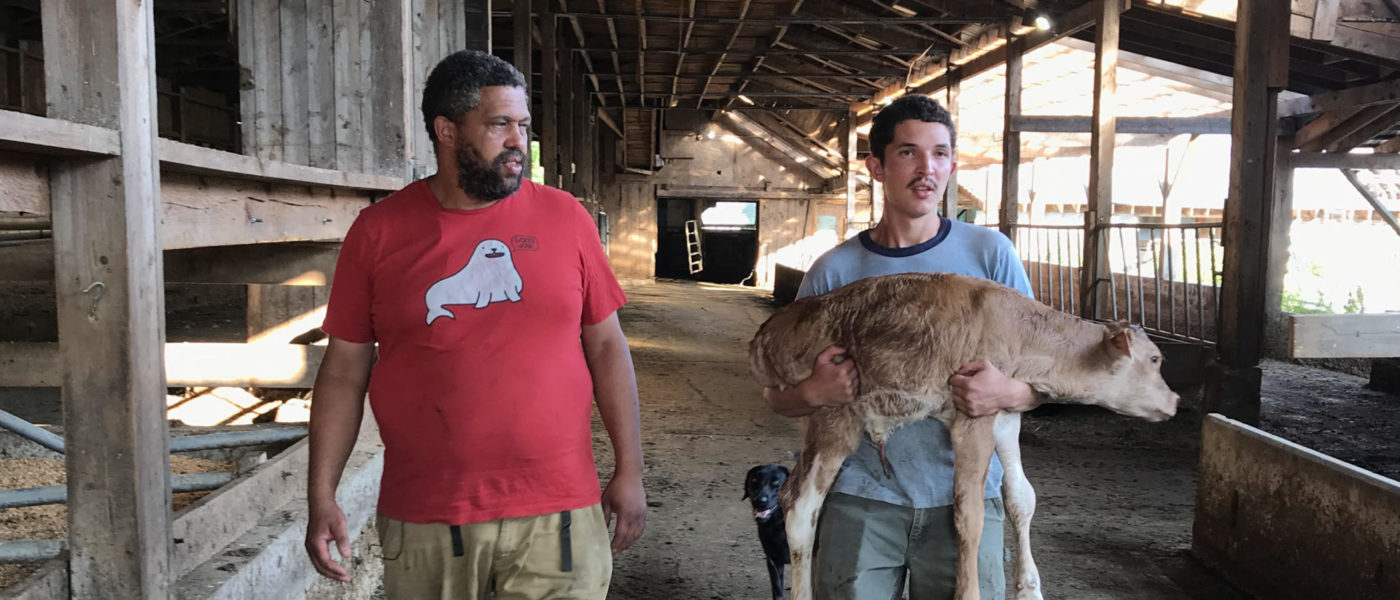Each year, I have the pleasure of visiting farms across the festival region with a film crew so that the inspiring stories and voices of family farmers can be shared on stage at Farm Aid 2022, in the festival broadcasts and on our website and social media channels.
Working with our film director, Susan Steiner, we find farmers with stories to share so that we can all better understand their experiences, challenges, opportunities, hopes and dreams. Our days are long, as we’re often visiting two farms in a day and driving across multiple states, but it’s some of my favorite work. There’s nothing like spending time with farmers on their farms, learning about their roots, how they came to farming, how they operate their business, what innovations they’ve come up with, and what their road blocks and aspirations are.
This year, we’re highlighting farmers’ climate stories–both how farmers are affected by climate change and how they are affecting climate change through the ways they farm. We often say farmers are on the front lines of climate change, and by that we mean they feel the effects of our rapidly changing climate in very direct ways. Farmers are more finely attuned to the weather than most of us because they’re out working on the land each and every day. They intimately know the cycles of the season—the amount of rain they receive, the average planting day and first frost day, normal temperatures and how they affect their crops and animals. And when the weather turns extreme, their livelihoods are often at risk.
More farmers are choosing to farm in ways that can sequester carbon in the soil and mitigate climate change. They’re incorporating cover crops to keep their soil from being bare in the winter, preventing erosion and strengthening the health of the soil. They’re practicing rotational and intensive grazing of livestock, which do the work of putting carbon in the soil with their hooves and their grazing. Farmers are growing for their local community, cutting out the middleman and the transportation of their crops to decrease carbon emissions. They’re growing and using on-farm energy to decrease their energy consumption. They’re innovating with techniques like silvopasture, agroforestry and permaculture. These are the stories we are seeking to share.
This year, we’re highlighting farmers’ climate stories–both how farmers are affected by climate change and how they are affecting climate change through the ways they farm.
These film shoots are also a way for us to connect to local farmers and build new relationships. And for us, being on farms can be magical. Last year, we met a minutes-old dairy calf, drank cream on top of fresh milk, met urban residents who rely on their local community farm for fresh, healthy food, heard from African immigrant farmers who fled violence and only wish to peacefully farm here in the U.S., and more.
The stories all are unique but there’s a common thread: the desire to be a steward of the land who provides for their community. It’s a value we all share, even if we don’t farm ourselves. And it’s a wonderful thing to celebrate. We can’t wait to share the farmer stories of this years’ festival region!
Watch last year’s farmer videos in this playlist below:



